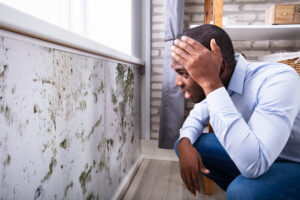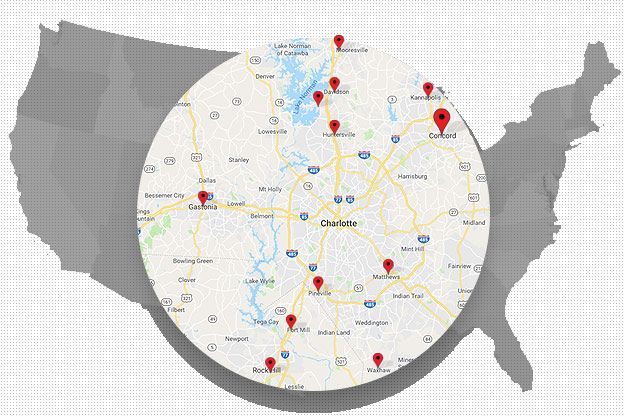Do You Own a Basement With Mold Issues? Here’s What You Can Do

Did you know that an estimated 70% of homes have problems with mold?
Even though having a basement with mold is a common occurrence, it isn’t a problem you’ll want to leave to become worse. Mold can cause health issues, like a stuffy nose, wheezing, or itchy eyes. However, other people with conditions like asthma or mold allergies can have more severe reactions, such as shortness of breath.
So if you have problems with mold, you’ll need to know what steps to take first. Keep reading this guide to learn what you need to do if your basement has mold issues.
How Does Mold Get In Your Basement?
Mold or mildew is a type of fungus that’s made up of tiny organisms that send out mold spores to find a wet or damp space to reproduce. These spores can attach to your hair or clothing, and you’ll come across them during the day without even noticing.
Mold thrives in temperatures between 60 and 80 degrees. If you also have moisture issues in your basement from pipe leaks, HVAC condensation, or storm flooding, the mold will easily start to grow on these surfaces. Then before you know it, you have a serious mold problem.
How to Spot Mold
You’ll first need to check in places where mold commonly grows, like around your HVAC unit, along the basement walls near the floor, insulation materials, or overhead pipes. Mold will typically appear like burn marks or areas of black spots. It can be green, brown, or black.
You’ll also typically notice that your basement has a musty or earthy smell.
If you’re still not sure if you have mold or not, you can try a test using bleach. Combine 1 part bleach with 16 parts water in a glass container and mix well. Next, use a cotton swab to dab it on your wall. If you notice the spot lightens quickly, you can assume it’s mold.
You can also order mold test kits at places like Home Depot and Amazon, but you’ll have to send them away to a lab and wait for the test results.
How to Get Rid of Basement Mold
Your first step to getting rid of basement mold is stopping any water leaks so you can prevent the mold from growing more. If you have a significant problem like cracks in the foundation, it’s best to call a professional basement and waterproofing company to repair these issues instead of trying it yourself.
If you notice a lot of moisture coming from your basement walls, you can also use a dehumidifier to dry out any excess humidity.
Prepare the Room and Protect Yourself
If you only have a small amount of mold and want to try to get rid of it on your own, you’ll need to make sure you take steps to protect yourself before you do anything else.
Put on long pants, a mask, a long-sleeve shirt, safety glasses, and gloves. You’ll also need to wear closed-toe shoes before you begin.
Next, you’ll need to make sure the basement airflow is sufficient. To do this, you’ll need to open windows and set up fans to decrease the number of mold spores in the air.
Additionally, you’ll need to have drop cloths to protect the floor and bags for sealing all moldy materials.
Remove Moldy Materials
If you have mold on materials like carpets, curtains, ceiling tiles, or floor tiles, you’ll need to remove this material completely from the basement and have it replaced.
You’ll also need to remember that mold can penetrate through the exterior layers of your walls. Therefore, you may need to remove things like drywall or wood paneling if you notice areas of mold growth.
Clean Moldy Areas
You’ll need to use a mold-killing solution for floors, walls, and hard surfaces you can’t remove. You can find commercial mold-killing products like Concrobium at your local home improvement store.
You can also try white vinegar diluted with water in a spray bottle or just use undiluted white vinegar to scrub away the mold.
Soap and water, or a bleach and water solution made from 1 cup of bleach and a gallon of water, can also kill mold. You can also combine a teaspoon of baking soda mixed with 2 cups of water. Once this is thoroughly dissolved, you can spray the solution on the mold.
You’ll need to use a stiff-bristled brush for rough surfaces and a disposable sponge for smoother surfaces.
Call a Professional Mold Remediation Service
The Environmental Protection Agency (EPA) recommends hiring a professional mold remediation company for extensive mold growth or water damage that covers more than a 3ft by 3ft area.
A professional mold remediation service will first remove all affected materials and insulation from your basement. Next, they’ll use special chemicals to wipe down your entire basement to eradicate all mold growth.
Mold remediation companies also use a HEPA vacuum, which will pull out any mold spores from the air and improve the overall air quality. Finally, they’ll give your basement a thorough cleaning, including wires, pipes, and ducts.
They’ll also find solutions to get rid of any future mold problems. These companies are also able to make structural repairs or waterproof your basement to stop any water leaks or moisture issues from occurring.
Call the Professionals if You Have a Basement With Mold
While you can get rid of small areas of mold, if you have a basement with mold, it’s best to call the professionals in for help.
You can turn to Sedona Waterproofing Solutions for all your basement and crawl space needs. We offer mold remediation, basement and crawl space repair, moisture prevention, basement waterproofing, and annual maintenance.
We have over 20 years of experience, are locally owned and operated, and use only high-quality materials.
We also offer free estimates, so make sure you contact us today for help!
Recent Posts
- How Crawl Space Encapsulation Benefits the Environment – An Expert Guide
- 6 Ways Professionals Keep Your Crawl Space in Top Shape
- Structural Repair Solutions for Crawl Spaces, Basements, and Foundations
- Essential Crawl Space Repair Tips Every Homeowner Should Know
- The Importance of Radon Mitigation: Ensuring a Safe Living Environment for Homeowners
Categories
- Basement Mold
- Basement Waterproof Foundation
- Basement Waterproofing
- Crawl Space Dehumidifier
- Crawl Space Encapsulation Cost
- Crawl Space Repair
- Crawl Space Waterproofing
- Encapsulation
- Foundation Repair
- Foundation Waterproofing
- French Drains
- Leaky Basement
- Mold Remediation
- Mold Removal
- Radon
- Slab Jacking
- Sump Pump
- Uncategorized
- Vapor Barrier
- Water Leak
- Waterproofing
- White Mold
Archives
- June 2024
- May 2024
- March 2024
- January 2024
- June 2023
- May 2023
- April 2023
- March 2023
- February 2023
- January 2023
- December 2022
- November 2022
- October 2022
- September 2022
- August 2022
- July 2022
- June 2022
- May 2022
- March 2022
- February 2022
- January 2022
- December 2021
- November 2021
- October 2021
- September 2021
- August 2021
- July 2021
- June 2021
- May 2021
- April 2021
- March 2021
- February 2021
- January 2021
- December 2020
- November 2020
- October 2020
- September 2020
- August 2020
- July 2020
- June 2020
- May 2020
- April 2020
- March 2020
- February 2020
- January 2020
- December 2019
- November 2019
- October 2019
- September 2019
- August 2019
- July 2019
- June 2019
- May 2019

